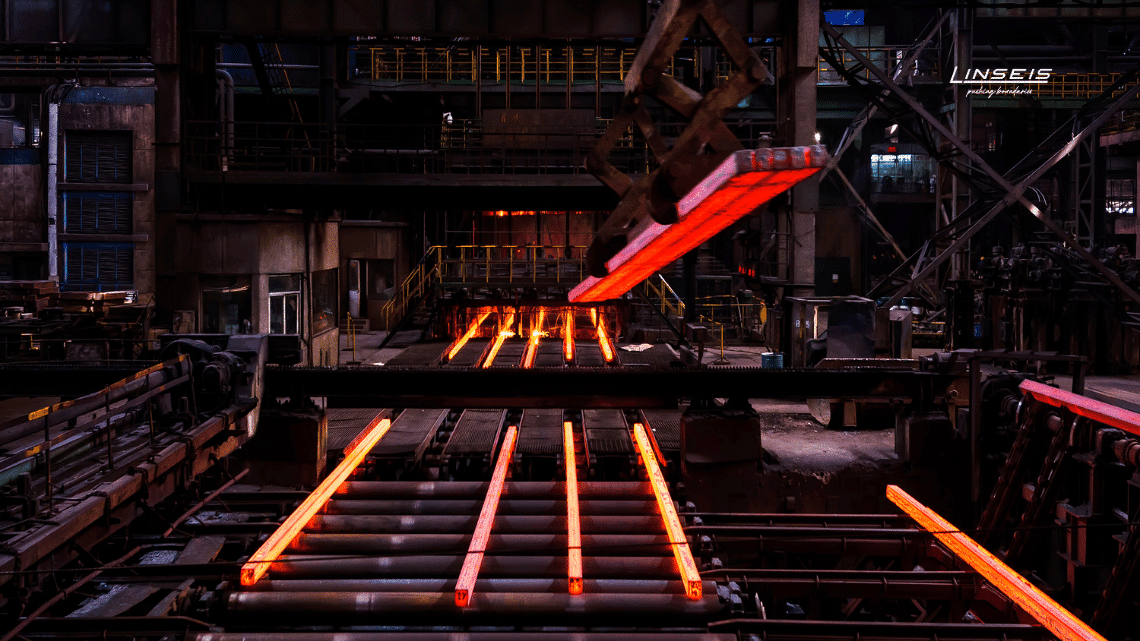Deformation techniques of metals

The deformation of metals is a pivotal process in modern industry, encompassing a wide array of applications from automotive manufacturing to aerospace. The ability to deform metals into desired shapes and sizes is not merely an art but also a science that is continually advancing.
A Brief Introduction to Metallurgy
Metallurgy is the science and technology of metals and alloys. It covers a multitude of processes, from the extraction of metal from ores to its processing into usable products.
Properties of Metals and Their Significance for Deformation
Metals are particularly suited for deformation due to their unique properties such as strength, ductility, and electrical conductivity. These properties can be modified through various deformation techniques to meet specific requirements.
Deformation Techniques – Cold Working
Rolling: This is a process where metal is passed between two rolls to reduce its thickness. It is one of the most commonly used techniques for producing sheets and plates.
Drawing: This involves pulling metal through a die to change its shape, for example, to produce wires or tubes.
Deep Drawing: A method where flat sheets are formed into deep, hollow shapes, such as in the manufacture of car parts or beverage cans.
Cold Heading: A process where metal is pressed into a die under high pressure to create complex parts with high precision.
Deformation Techniques – Hot Working
Forging: This involves shaping metal through hammering or pressing, often at high temperatures, to increase its ductility.
Hot Rolling: Similar to cold rolling, but performed at higher temperatures to allow for greater reductions in thickness.
Extrusion: A process where metal is pressed through a die to create long products with a constant cross-section, such as rods or tubes.
Simulation Techniques in Metal Deformation
In modern metallurgy, simulations play a crucial role. They enable engineers to optimize processes, conserve resources, and develop better end products.
Quenching and Deformation Dilatometers are specialized instruments used in materials science and metallurgy to study the behavior of materials under various thermal and mechanical conditions.
Quenching Dilatometer – Applications
A Quenching Dilatometer is used to measure the thermal expansion and contraction as well as phase transformations of materials caused by rapid cooling (quenching). Typical experiments include:
- Determining Critical Cooling Rates: It measures how quickly a material must be cooled to produce certain microstructures such as martensite in steel.
- Investigating Phase Transformations: The device can be used to determine the temperatures at which phase transformations occur during cooling.
- Measuring Length Change: It measures the length change of the sample material during the quenching process to determine expansion coefficients.
- Simulating Heat Treatment Processes: It can be used to simulate and optimize industrial heat treatment processes like hardening and tempering.
Deformation Dilatometer – Applications
A Deformation-Dilatometer is used to study the behavior of materials under simulated deformation processes. Typical experiments include:
- Simulated Deformation Processes: It can be used to simulate deformation processes like rolling, forging, or pressing.
- Measuring Length Change Under Load: It measures how the length of a sample changes when subjected to mechanical forces similar to those experienced during a forming process.
- Investigating the Effects of Forming Temperatures: The device can analyze the effects of different temperatures on the formability and final properties of the material.
- Studies on Work Hardening: It allows the investigation of how the hardness and strength of the material change through mechanical work.
Other Common Simulation Techniques
In addition to Quenching and Deformation Dilatometers, there are many other simulation techniques used in metallurgy, such as Finite Element Analysis or molecular dynamic simulations.
The Impact of Deformation on Microstructure
The deformation of metals profoundly influences their microstructure, and this influence is critical for the development of the material’s mechanical properties.
- Grain Refinement: Plastic deformation can reduce the grain size of a metal, known as grain refinement. Fine-grained structures enhance the strength and toughness of the metal through the mechanism of grain boundary strengthening.
- Dislocations: Deformation leads to the formation and movement of dislocations, which can be considered as linear defects within the crystal lattice structure of the metal. The interaction between dislocations and the resulting dislocation density lead to a hardening of the material, known as strain hardening.
- Texturing: Deformation can lead to a preferred orientation of the crystallites, known as texture. This texturing can affect the anisotropic properties of the metal, meaning the metal can exhibit different properties in different directions.
- Phase Transformations: In some cases, deformation can trigger phase transformations that lead to a change in microstructure. For example, in certain steels, a high rate of deformation can promote the formation of martensite from austenite.
- Twinning: Deformation can also lead to the formation of twins in the crystal lattice, which is another form of hardening. Twins are mirror images of the crystal structure on the other side of a common plane and can increase strength.
- Subgrain Formation: At high levels of deformation, subgrains can form within the grains, separated by low-angle grain boundaries. These subgrains can further influence the properties of the metal.
- Microcrack Formation: Under extreme deformation, microcracks can form, which may increase susceptibility to fracture. This is particularly the case near surfaces or in brittle materials.
- Recovery and Recrystallization: After deformation, processes such as recovery and recrystallization can occur when the material is heated. Recovery reduces the dislocation density and associated stresses, while recrystallization leads to the formation of new, stress-free grains.
Technological Applications of Deformation
Examples from Industry
Deformation techniques are employed in a variety of industries, from the manufacture of aircraft parts to the automotive industry and even jewelry making.
- Construction: In the construction industry, deformation techniques are used to shape steel beams that serve as supporting structures in buildings and bridges. Cold-formed steel profiles are also a result of deformation techniques.
- Pipe and Vessel Fabrication: Deformation techniques such as bending and rolling are crucial for the manufacture of pipes and pressure vessels used in the oil and gas industry, in power plant construction, and in the chemical industry.
- Electronics: In the electronics industry, thin metal foils and wires are produced by deformation techniques, which are used in components such as circuit boards, connectors, and switches.
- Medical Technology: Deformation processes are used to form surgical instruments, implants such as hip and knee joints, and stents for cardiovascular applications.
- Packaging Industry: Deformation techniques such as deep drawing and stamping are used to produce metal packaging such as cans, tubes, and containers.
- Shipbuilding: In shipbuilding, deformation techniques are used to shape steel plates and profiles needed for the hull and other structures of ships.
- Aerospace: High-precision deformation techniques are used to fabricate components for aircraft and spacecraft, where low weight and high strength are paramount.
- Energy Technology: In wind and solar energy, deformation techniques are used to manufacture components such as wind turbine blades and frames for solar modules.
- Sporting Equipment: Deformation techniques are used to manufacture metal parts for bicycles, golf clubs, ski bindings, and other sports equipment.
- Coin Minting: The production of coins is a classic example of deformation techniques, where metal plates are stamped and embossed to create detailed designs and inscriptions.
Advantages of Deformation Techniques in Production
Deformation techniques offer a number of advantages in production that make them an indispensable part of modern manufacturing processes. They enable mass production of complex shapes with high precision and repeatable quality, leading to significant reductions in material and machining costs.
By deforming at room or elevated temperatures, the mechanical properties of metals, such as strength and toughness, can be improved, resulting in more durable and high-performing products.
Deformation techniques are also energy-efficient and environmentally friendly, as they often consume less energy and produce less waste than subtractive manufacturing methods.
Furthermore, they provide the flexibility to quickly respond to market demands and adjust production without extensive tool changes.
Through the use of simulation techniques, improved tools, and advanced materials, many of the traditional challenges of metal deformation can be overcome.




